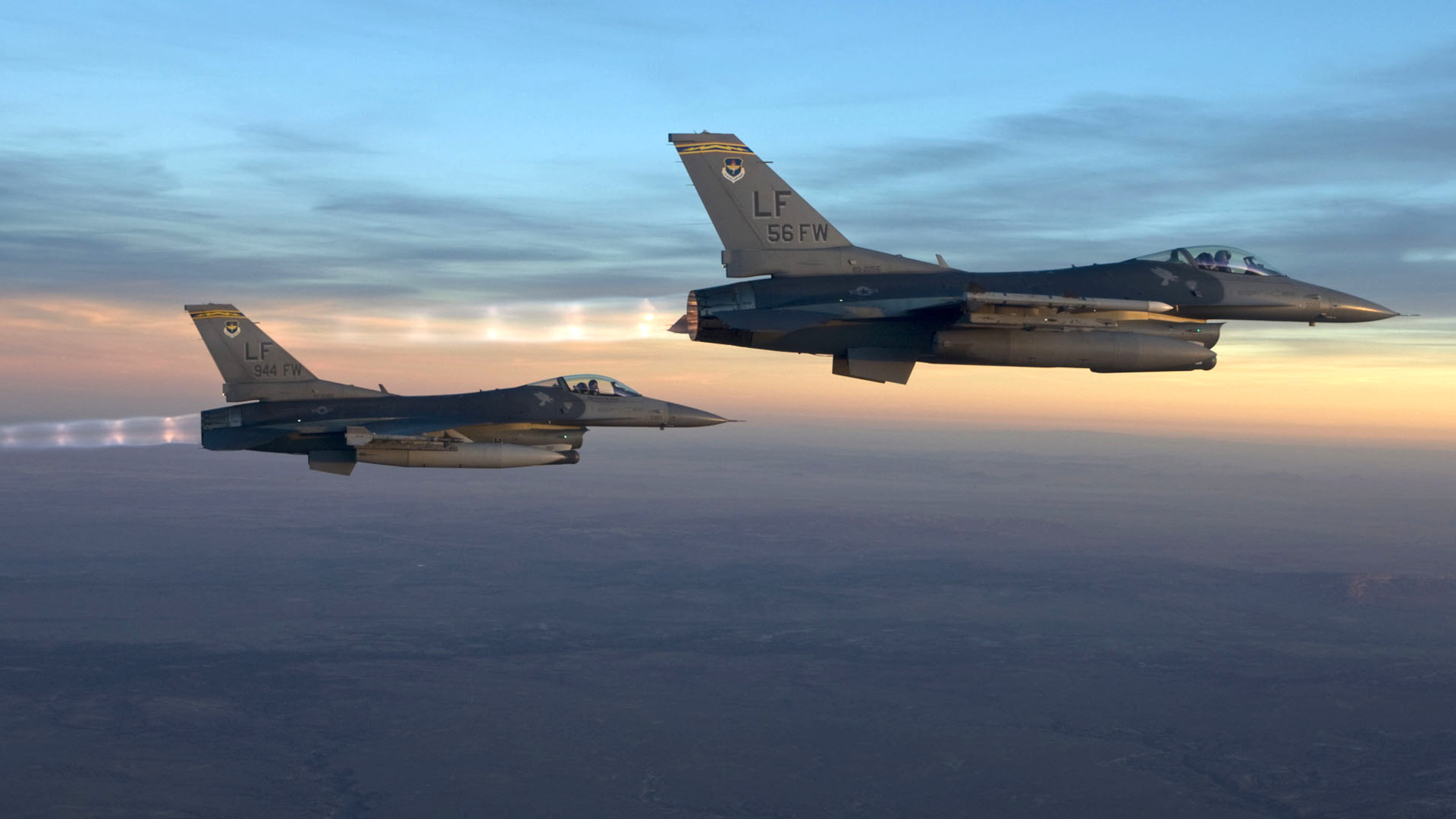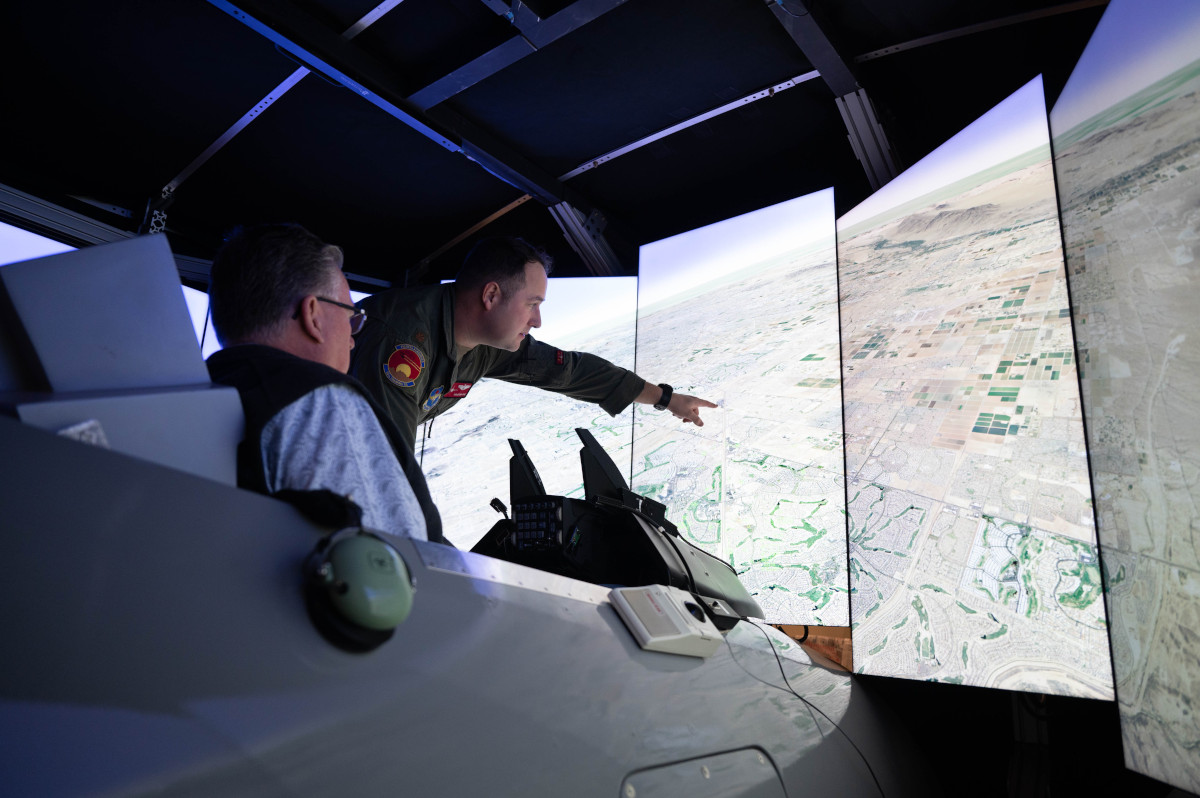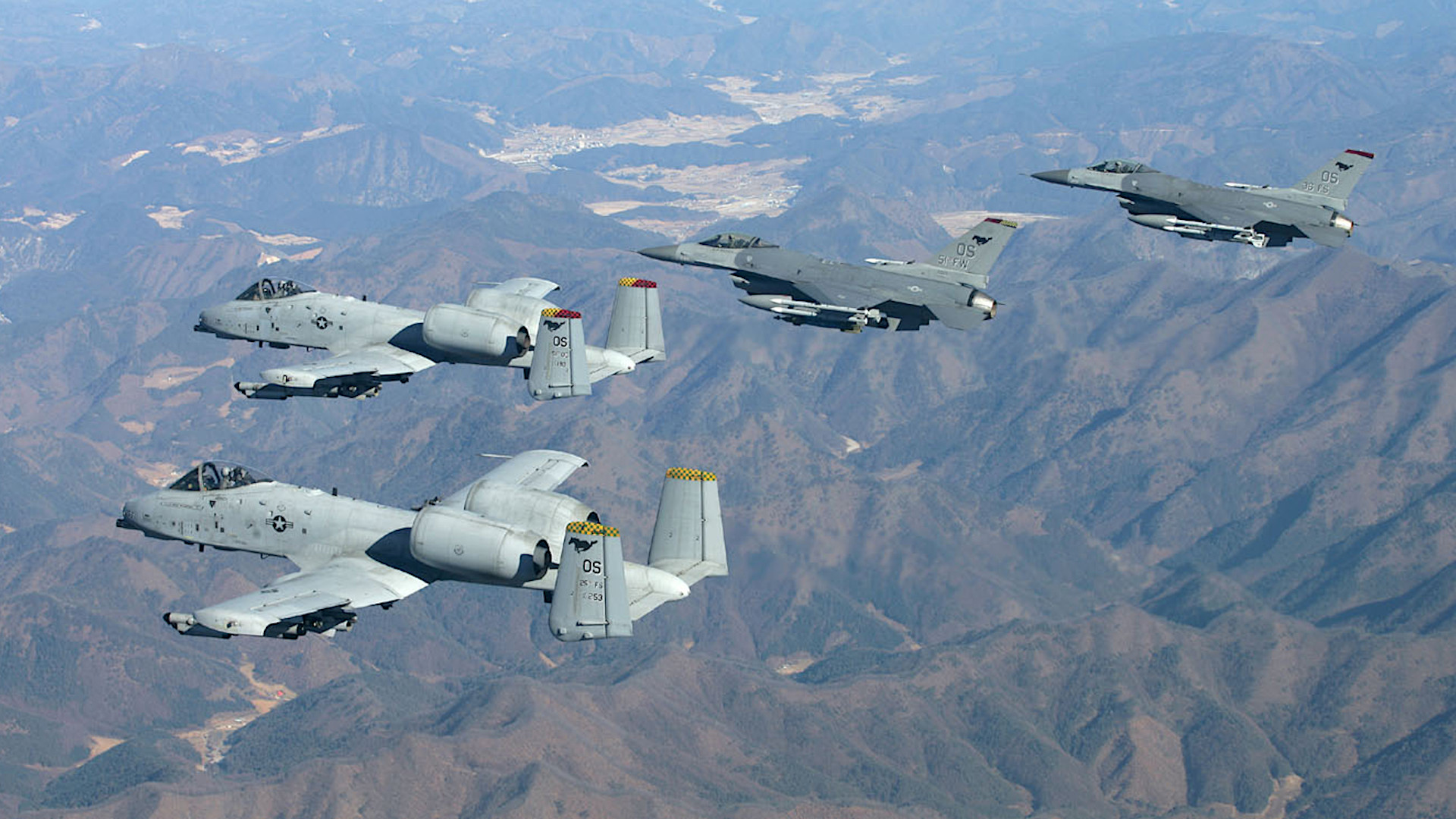Ukraine’s Defense Minister Oleksii Reznikov has reiterated a plea for the country’s international partners to provide it with more modern Western fighter jets, such as the U.S.-made F-16 Viper. He has also rejected calls from inside the Ukrainian government to push American authorities to send A-10 Warthog ground attack aircraft. This follows reports that two Ukrainian pilots are now in the United States as part of an exchange that will include a skills assessment, which might point to the possibility of future transfers of Vipers and/or other Western combat aircraft.
Reznikov gave his latest comments about the need for Western combat jets like the F-16, and the unsuitability of the A-10 to meet the country’s requirements, in an interview with Ukrainian news outlet Liga that was published today. The Defense Minister’s remarks about the Warthog came in direct response to a recent call for the transfer of those aircraft, as well as AH-64 Apache attack helicopters, from Kyrylo Budanov, head of the country’s Defense Intelligence directorate. There were reports last month that Budanov was in line to succeed Reznikov as Defense Minister, which did not come to pass.

“An airplane is a platform that is primarily an element of air defense,” Reznikov said, according to a machine translation of the Liga story. “Therefore, we need aircraft that, as an element of air defense, are capable of seeing an enemy aircraft in the air and damaging it, shooting down a cruise/ballistic missile, and, if necessary, striking ground targets (warehouses, command posts, accumulation of equipment).”
It is worth noting here that while fighter jets, broadly, can definitely have a counter-cruise missile role, using them to shoot down ballistic missiles is a much more complicated proposition that is dependent on a host of factors. The Ukrainian armed forces do have a clear interest in additional capacity to counter-ballistic missiles, in general. Ukraine’s military currently has very limited capabilities in this regard and there are persistent concerns about the potential delivery of Iranian-made types to bolster Russia’s arsenal. The United States and other countries are working to deliver Patriot surface-to-air missile systems, which will more directly help boost Ukraine’s anti-ballistic missile capabilities.
“This plane [the A-10] can’t see far and is very slow. There are a lot of them in the USA, but they don’t fight. They are old, they have no spare parts, and it is impossible to maintain them,” Reznikov continued in his interview with Liga. “I discussed these planes [with U.S. officials] back in March of last year.”
Reznikov first publicly discussed the A-10 issue, which has said he directly asked U.S. Secretary of Defense Lloyd Austin about, in an interview with The Washington Post last year. He said he had dropped the matter quickly after Austin expressed concerns about the vulnerability of the Warthogs to Russian air defenses and told him about the general state of the examples currently in storage at the boneyard at Davis-Monthan Air Force Base in Arizona. While the U.S. Air Force officially has around 100 A-10s, a mix of A and C models, in storage, a significant number of them, particularly the As, are non-flyable and are used as parts sources for the Warthogs still in service. More are now in the process of being retired.

The possibility of supplying additional combat jets, especially fighters – whether they be newer Western types or older Soviet-designed ones the Ukrainian Air Force is already familiar with – has been an absolute saga for months now. Numerous proposals from various countries, including some made very publicly, have come and gone without any real progress toward getting any planes to Ukraine.
However, reports of the arrival of a pair of Ukrainian pilots in the United States, and that 10 more are set to follow them, might be a sign that there could be real progress on the matter coming. NBC first broke the news over the weekend of these reported plans to conduct an assessment of the skills of these aviators to determine how long it might take them to learn how to pilot jets like the F-16.
“The program is about assessing their abilities as pilots so we can better advise them on how to use capabilities they have and we have given them,” an unnamed official in President Joe Biden’s administration said, according to NBC.
“The ‘familiarization event’ is essentially a discussion between the Air Force personnel and an observation of how the U.S. Air Force operates,” an unnamed defense official added, according to the outlet. “This event allows us to better help Ukrainian pilots become more effective pilots and better advise them on how to develop their own capabilities.”
The officials stressed that this exchange, which will reportedly include getting the Ukrainian pilots into “a [flight] simulator that can mimic flying various types of aircraft,” is not a formal flight training program. They also deferred to comments Under Secretary of Defense for Policy Colin Kahl made during a Congressional hearing last week about the Pentagon’s estimates for how long it might take to train a military aviator from Ukraine to fly something like an F-16.

Kahl told legislators at that hearing that the Pentagon’s current assessment is that such training would take approximately 18 months, which is the same amount of time it expects it would take to affect a transfer of a batch of Vipers or similar aircraft.
“So you don’t actually save yourself time by starting the training early in our assessment,” Kahl said. “And since we haven’t made the decision to provide F-16s and neither have our allies and partners, it doesn’t make sense to start to train them on a system they may never get.”
Kahl also disclosed that Ukrainian officials had previously submitted a request for 128 fighter jets – a mixture of F-15 Eagles, F-16 Vipers, and F/A-18 Hornets – which the U.S. government clearly did not agree to. “Our Air Force estimates that over the long-term, Ukraine would probably need 50-80 F-16s to replace their existing air force,” he added.
The video below shows elements of the California Air National Guard 144th Fighter Wing training in Ukraine back in 2018.

At the same time, an actual assessment of the general existing skill of Ukrainian pilots is exactly the kind of thing one would want to do to get a better sense of exactly how long it might really take to train them on a new type of aircraft. In February, the British government also confirmed plans to help train Ukrainian pilots, but it remains unclear exactly what that particular effort entails.
Last summer, Col. Yuri Ignat, the top spokesperson for the Ukrainian Air Force, told Air Force Magazine that Ukraine had some 30 pilots proficient in English, as well as maintenance personnel, who could readily be sent to the United States for training.
The War Zone has previously laid out a detailed case for the benefits of getting a program started now to train Ukrainian pilots on some kind of more modern Western combat jet, even without a firm plan to transfer any actual aircraft. We have also explored the potential hurdles to doing so in depth.
The U.S. government’s current position, as espoused by officials like Kahl and even President Biden himself, is that a potential transfer of F-16s, or something similar, is not on the agenda now and is not what they view as a top priority for the Ukrainian military. At the same time, American authorities have generally declined to completely rule out the possibility that this could change in the future.
Since the beginning of the year, there have been a number of reports about various European countries considering sending more modern Western fighter jets, as well as older Soviet-designed types, as part of a larger coalition effort. This could mirror the course and ultimate outcome of protracted deliberations last year between Ukraine’s international partners about transferring more modern Western tanks. The United States, the United Kingdom, Germany, and others are now in the process of sending various types of Western tanks to the Ukrainian military as part of a coordinated effort.
What may come of the reported assessments in the United States of these Ukrainian pilots does very much remain to be seen. As NBC noted in its story, these kinds of exchanges occurred with some degree of regularity before Russia’s all-out invasion in February 2022 and did not lead to any plans for the Ukrainian Air Force to acquire F-16s or other more modern Western combat jets. Of course, those exchanges were under very different circumstances.
At the same time, Defense Minister Reznikov’s comments today make clear that Ukraine’s government still sees acquiring Western jets as among its top priorities, just not A-10s.
Contact the author: joe@thedrive.com
